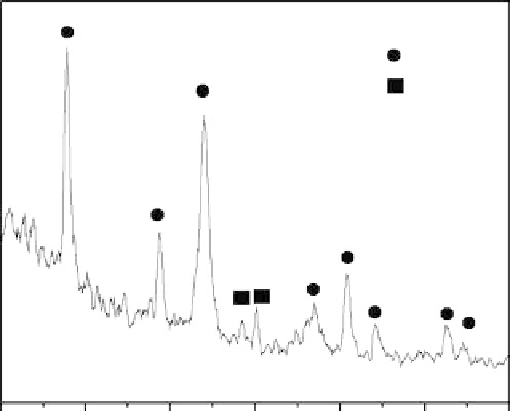Biomedical Engineering Reference
In-Depth Information
two implanted titanium samples and a higher bias (implantation) voltage creates more surface fea-
tures possibly due to the higher amount of deposited energy and thicker calcium-containing layer.
The elemental depth profi les acquired by SIMS are plotted in Figure 19.19 as ion counts per
second versus depth. Conversion to concentration is not done here due to the lack of a reference
standard, but the qualitative information, particularly comparison among profi les, is reliable as
they were acquired using the same analytical conditions. The SIMS profi les indicate that calcium
has been successfully implanted into and deposited onto the sample and the implantation depth
increases with higher bias voltages.
The XRD spectrum obtained from the implanted titanium indicates that the outermost layer
is mainly composed of calcium hydroxide, as shown in Figure 19.20. Therefore, this layer is
1E8
16O
40Ca
48Ti
1E7
Deposition
layer
Implantation layer
Ti substrate
1000000
100000
10000
0.0
0.5
1.0
1.5
2.0
Depth (
µ
m)
FIGURE 19.19
SIMS depth profi les: (a) 10 kV ion-implanted sample and (b) 20 kV Ca ion-implanted
sample. (From Liu, X.Y. et al.,
Surf. Coating Tech.
, 191, 43, 2005. With permission.)
Ca(OH)
2
Ti
10
60
70
20
30
40
50
2
(degrees)
FIGURE 19.20
Thin-fi lm XRD spectrum of Ca ion-implanted titanium at a bias voltage of 10 kV. (From Liu,
X.Y. et al.,
Surf. Coating Tech.
, 191, 43, 2005. With permission.)









